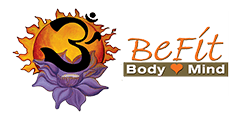Breath and Connections
Just coming back from Maui everyone expects me to have something new and exciting to share . . . which I usually do . . . however this trip was mostly about me learning 3rd series, and I did learn some new assists for primary and second series . . . but what I really need to emphasize the most about being with Nancy is the importance to work with your breath, when Nancy is assisting you she is listening and watching for your breath to be moving in your body:
- Don’t work on the posture, work on your breath! Put more effort into working the breath than you do to working the posture.
- Move the breath in your body
- Pay attention to begin the breath and then begin your movement, also pay attention to your struggle areas—the temptation during struggle is to hold your breath which will keep you “stuck” wherever you stop your breath.
Breathing and flow are more important than “correct” alignment in the Ashtanga practise. It’s incorrect to spend several breaths messing about with “alignment” before you go into the next asana; alignment doesn’t take priority over breath, count, “vinyasa”. When you spend too much time fidgeting with your posture you are actually doing less yoga and more mind stuff! The repetition of the Ashtanga practice teaches (repetition does not entertain!), pure repetition alone will teach you how to enter and exit poses for your body type safely and efficiently. When you focus on your breath you will learn to accept where your body is in the pose—and realize where your body is in the pose does not make you a good or bad yogi, where your intention is during the pose makes it yoga.
Make the Connection
Ashtanga principles of alignment pay attention to a lot of internal www.healthandrecoveryinstitute.com/topamax-topiramate/ work, ex. the bandhas. Priority in Ashtanga is to get the contact points, fingers to toes and head to knee in pashimo and janu series—even if you have to bend your knees. In Iyengar based alignments you are taught to extend out of your spine losing connection to your bandhas, in Ashtanga we connect with the bandhas come forward with a slightly rounded lumber spine to get head to knee contact and then extend out. This helps you connect with your bandhas and is actually safer for the back for most people (individuals with disc related issues will need to work with more extension) then constantly popping the tailbone and ribs trying to over extend the front of the body. Also when you work with so much extension on the front of your body you forget that you are overly contracting the back body and creating tension there. You want both the front and back sides of your body long and open your heart to rest right in the middle open on all sides.
The connection points (fingers to toes and head to knees) is about energy flow in the body, you are connecting a circuit of energy IN the body helping prana to circulate, whereas without those contact points energy flows out of the body. For example in Trikonasana, it is preferred to catch the big toe even if it means you need to bend your knee or let your hip temporarily roll forward—in the posture you can keep working to straighten the knee and roll the hip open, and in time you will be able to hold the toe and get the hip and knee alignment. After many years of practice your body will get the longer lines while maintaining the connections.
